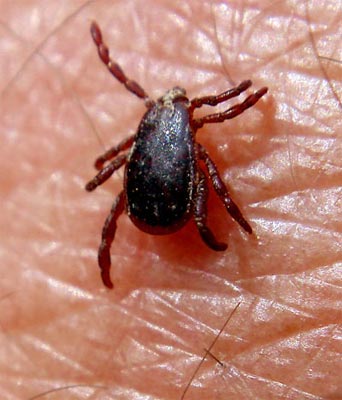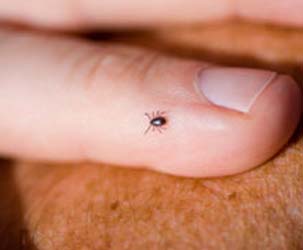Crimean–Congo hemorrhagic fever (CCHF) or Congo Fever Details, Classification, Prevention, Description, Photos, Pictures, Congo Fever in Gujarat, Ahmedabad
Virus Classification:
Group: Group V ((-)ssRNA)
Family: Bunyaviridae
Genus: Nairovirus
Species: Crimean-Congo hemorrhagic fever virus
What is Congo Fever?
Crimean–Congo hemorrhagic fever (CCHF) is a widespread tick-borne viral disease, a zoonosis of domestic animals and wild animals, that may affect humans. Human infections
begin with nonspecific febrile symptoms, but progress to a serious hemorrhagic
syndrome with a high case fatality rate. The pathogenic virus, especially common in East and West Africa, is a member of the Bunyaviridae family of RNA viruses. Crimean-Congo hemorrhagic fever is one of the most widely distributed viral
hemorrhagic fevers. Clinical disease is rare in infected mammals, but commonly severe in infected humans, with a 30% mortality rate. Outbreaks of illness are usually attributable to handling infected animals or people
Congo Fever in Gujarat (Ahmedabad):-
A six-member team from the National Centre for Disease Control, led by Dr Veena Mittal will visit Gujarat to investigate the prevalence of Crimean Congo Hemorrhagic fever (CCHF). “The multidisciplinary team will assess the situation,” said an official of the Union Health Ministry.
State health minister Jaynarayan Vyas on 19th January said "We have more than enough stocks of anti-viral drug Ribavirin, which is to be administered," said Vyas, who held an exhaustive review meeting on 19th January to chalk out the prevention and treatment protocol of the dreaded viral epidemic.
The state government has requested the National Institute of Virology (NIV), Pune, for reagents - antigen and prima - so that the tests for Congo fever can be carried out in the Civil hospital laboratory and save a lot of time taken to get the tests done in Pune.
The virus has so far killed three people. As per the preliminary report sent by National Institute of Virology (NIV), Pune, it has the potential of killing 20-90 per cent people
WHO said most CCHF cases occur in people in close contact with animals, such as farmers, slaughterhouse workers and veterinarians.
The minister said that one more expert team headed by Dr Veena Mittal from the National Centre for Disease Control (NCDC) will arrive in the city on Thursday. According to additional director of health Dr Paresh Dave, a fact-sheet of the protocol of treatment by the Centre for Disease Control (CDC) is being widely circulated among doctors. "We`ve also met the representatives of the Indian Medical Association (IMA) so that all doctors are made aware about the Congo fever and alert authorities as soon as they spot any case with its symptoms," said Dr Dave.
Prevention:-
1.) Where mammal and tick infection is common agricultural regulations require de-ticking farm animals before transportation or delivery for slaughter. Personal tick avoidance measures are recommended, such as use of insect repellents, adequate clothing and body inspection for adherent ticks.
2.) When feverish patients with evidence of bleeding require resuscitation or intensive care, body substance isolation precautions should be taken.
Source:-
1.) en.wikipedia.org
2.) timesofindia.indiatimes.com







Tidak ada komentar:
Posting Komentar